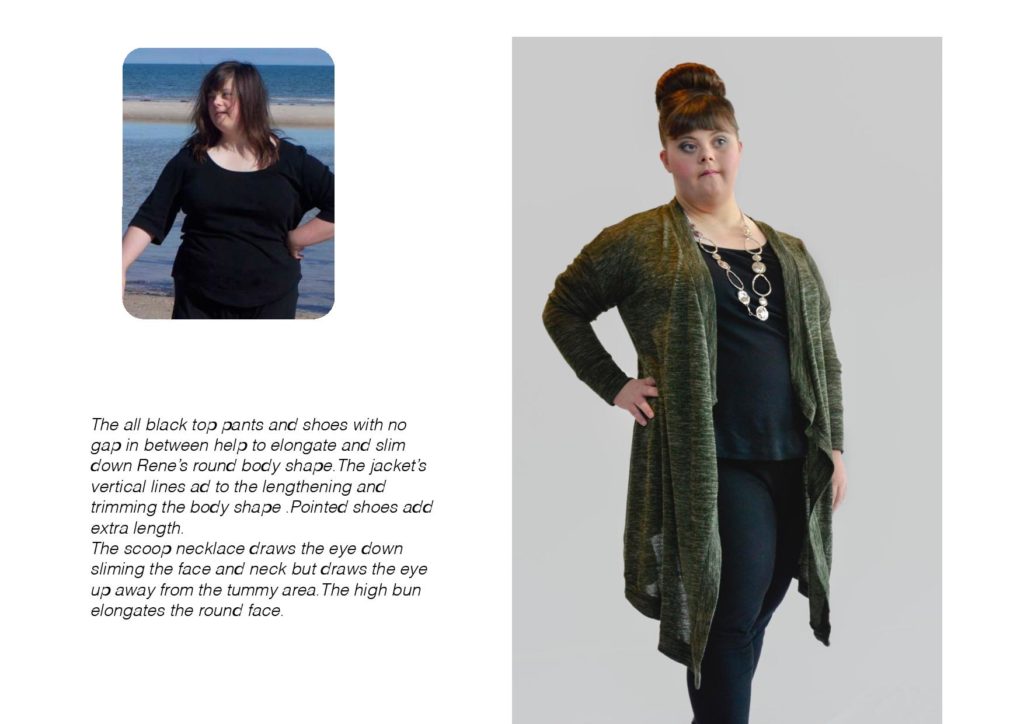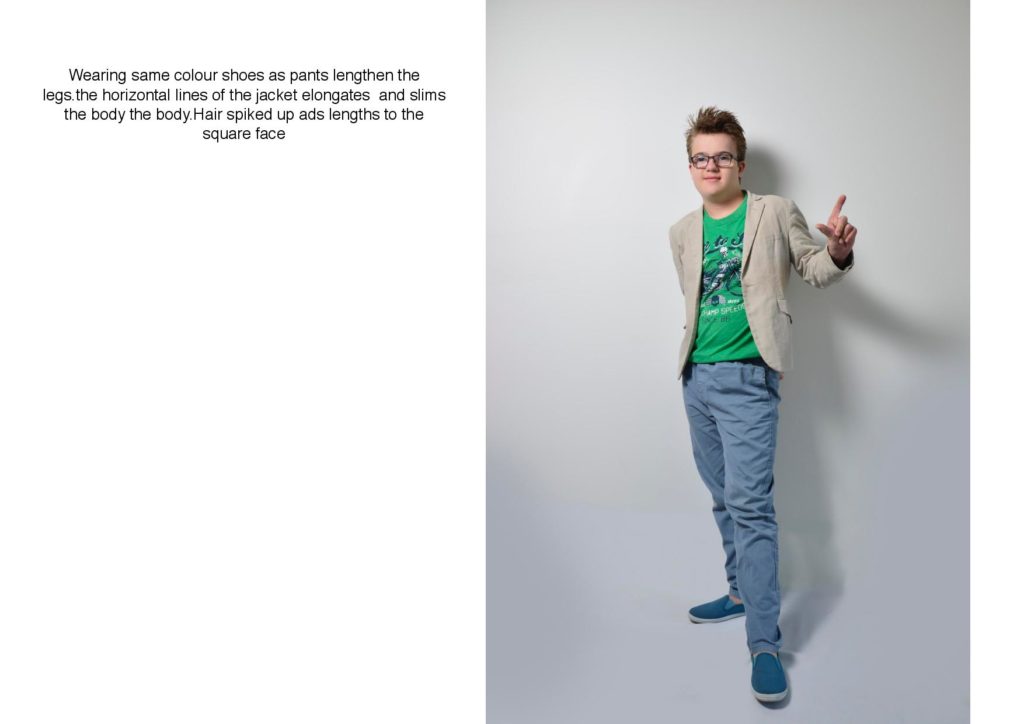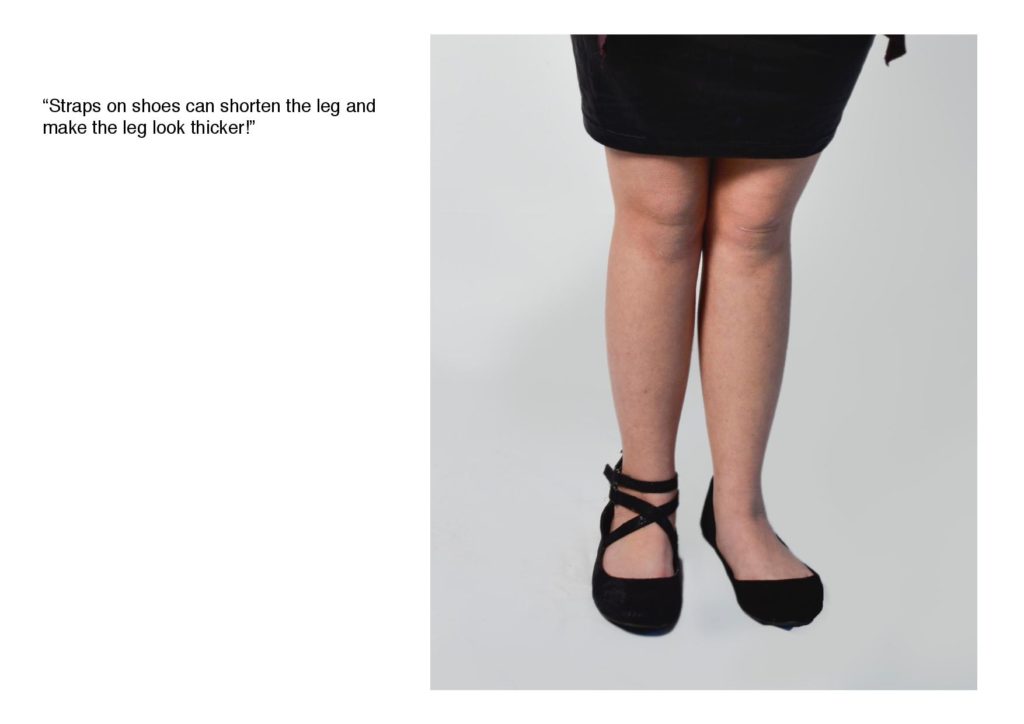Guest Post:
After our last post about ‘Changing the perception of people with special needs through makeover’, went viral, we requested ‘Nerida Lamprill’ to write another post for us. A quick guide for parents and professionals on Do’s and Don’ts of making a positive first impression of persons with Down Syndrome and, she happily agreed to write a few practical tips and tricks on dressing up smart. Hope you all would learn as much as I did after reading this post. Once again, thanks for being a part of ‘Two Minute Parenting’

Physical appearance speaks first when impressions are being formed. Knowing how to dress to suit your unique physical features empowers you by building self- confidence and self-esteem which then influences the other areas of your life; same holds true for persons with special needs.
Today, as part 2 of our widely read last post on ‘Changing Perceptions Of People With Special Needs Through Makeover”, we would like to present a general guide on ‘how to make a positive impression’ for persons with Down Syndrome”.
Many believe that physical appearance are not as important but, statistics tells us otherwise. The first impressions last for years and people do judge you based on how you dress up. There are reasons why certain kind of clothes are worn on certain days and occasions, and, there are proven statistics on how better-dressed people have better employability or likability. It is also, not only about others; if one is dressed well, he/she feels confident. This holds even more true for children and persons with Down syndrome. We, as parents or caregivers strive hard to make them part of the mainstream but never pay attention to what might accentuate their best features. Mostly it is parents who decide what a child or a person would wear based on their own perceptions and these choices then stay for a lifetime.
Sometimes a few suggestions from the professionals can make our life easy and shopping easier. Since persons with Down syndrome do have some identical and distinct characteristics in terms of their physical appearance; be it their short height or round face, their most beautiful eyes and their amazing hair, this post is going to highlight on some of their concerns and basic appearance tips.

A more in-depth guide can be accessed in the book “ Love your shape” available at www.successfoundations.com.au
FACE
Persons with Down Syndrome mostly have a rounder face shape, to balance it we need to make the face look longer and there are ways t do just that.
HAIRSTYLES
Hairstyles with height on the top e.g. high ponytail or high bun;
textured spiky cuts with flat or short sides;
The side parting is more flattering;
No fringe or fine side swept fringe;
long hair, pins sides back flat or tuck behind your ears with the hair hanging out at the back;
styles that sit flatter on the sides;

NECKLINES
V necklines;
deep scoop, one shoulder;
narrow cuts in tops that sit close the base of the neck, the collars pointing downwards not widespread.
ACCESSORIES
Earrings that sit in a long vertical shape. Necklaces that fall in a V or oblong shape drawing the eye down; this can also be created with the neckline pattern on garments.
WHAT TO AVOID
Turtlenecks, necklines that sit wide, choker necklaces that sit high on the neck, chunky earring styles
that sit on the earlobe
BODY SHAPE
A person with Down syndrome may be on the shorter side of the body scale or a rounder body shape. To bring balance we need to elongate the appearance of your body.

WHAT TO WEAR TO APPEAR TALLER AND LEANER
Dress in one colour, or with few colour variations, to create a monochromatic look or one long vertical line;
vertical patterns or design lines such as vertical seams, or buttoned up through the centre;
Straighter leg pants that sit below the ankle or to the floor when shoes are
same colour shoes as your pants will make the legs look longer;
to give the leg a longer look, tapered or pointed toes and a U or V shape throat and low vamp (top part of the shoe) is best;
avoid ankle straps it shortens the leg unless in a similar colour to leg colour
shorts or crop pants worn above the knee;
pants over boots, not tucked in, unless both are the same colour.
open, straight or slightly shaped jacket, or low textured cardigan no longer than your hips;
for women dresses and shirts should end either above the knee, or be ankle to floor length

WHAT TO AVOID
Three-quarter pants or anything that finishes at the calve muscle as it will cut off your leg length;
ill-fitting, oversized clothes, as they will add extra bulk and widen you instead of elongating the body
pants that bunch up at the angle.
horizontal or big patterns, a fabric that has a lot of texture;
for women wide, full dresses or skirts
WHAT TO WEAR FOR A FULLER TUMMY AREA
layering with long lean or semi-fitted jackets, cardigans, or vests;
monochromatic looks. Same colour on top and bottom to create a vertical line. A long jacket over the top can add to the vertical line;
shirts, tops or dresses with vertical design lines, like seams, button-up shirts;
layered tops with an asymmetrical element;
darker colours over the tummy area on top of dresses;
flat front pants or skirts that sit just below your waist;
patterns, or embellishments on the top half of the body to draw the eye upwards;
simple buttons on jackets so attention isn’t given to your midsection;
WHAT TO AVOID

Pants or skirt styles that gathered on waist
stiff, bulky or tight fabrics;
belts around your waist. Under the bust can work to give shape if you are a woman
big tops, that can be worn on their own, that hang over the tummy and give no shape;
low-cut pants that make your tummy push out over the top.
Positive first impressions lead to social acceptance. Personal presentation is one area that we can make immediate changes to, creating a positive first impression. Physical appearance speaks first when first impressions are being formed.
“Love My Shape “ by Nerida Lamprill is a book that empowers you to create a positive first impression as a woman. Nerida conducts workshops for all sectors of the community and is a regular speaker at conferences and events
This is a second guest post by ‘Nerida Lamprill’, the lady behind changing the perception of people with Down syndrome and other special needs and, the author of the book ‘Love My Shape.’ Originally had an award-winning career in the fashion industry, Nerida now works extensively designing and facilitating a range of successful workshops for business organisations and the disability sector to assist people learn how to present and market themselves for success.Nerida talks about creating a great first impression and personal presentation for children with Down Syndrome and other special needs. I found Nerida very impressive and inspiring, hope you all feel the same…







Keep up the good work!
Thanks Ben Montaya..keep visiting 🙂
Very informative loved reading ,being a parent of 38year old downs female ,I am impressed
Thank you so mch for this article.. this is a big help not just for my daughter with down syndrome but to any people with difficulty in choosing the right style for their body type..